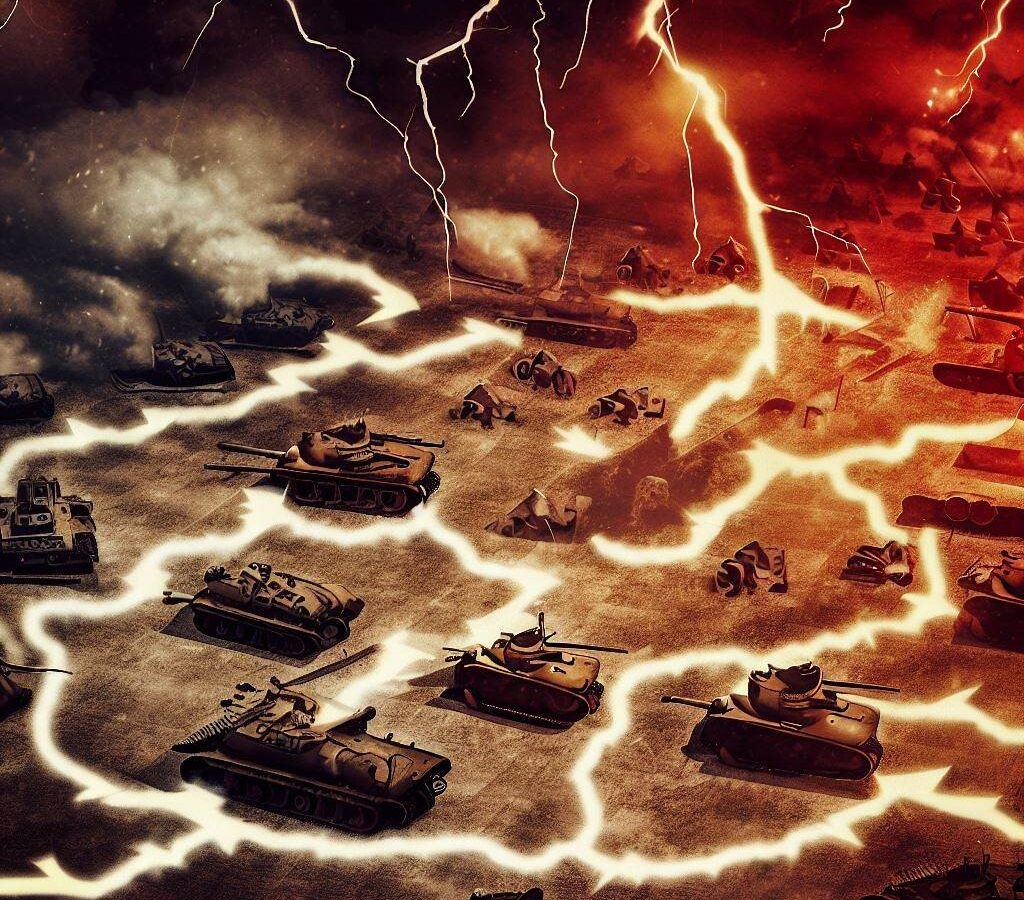When we think of World War II, one term that often comes to mind is “blitzkrieg.” This lightning-fast military strategy employed by Nazi Germany had a significant impact on the course of the war. In this blog post, we’ll delve into the intricacies of blitzkrieg tactics, how they contributed to Hitler’s early successes, who suffered its devastating effects, and how Russia eventually turned the tide against this formidable strategy.
What Were the Three Steps in the Blitzkrieg?
Blitzkrieg, which translates to “lightning war” in German, was characterized by three key steps:
1. Rapid Mobility: Blitzkrieg relied on swift movement, with tanks and infantry advancing together. This rapid mobility was a departure from the trench warfare of World War I.
2. Surprise Attacks: Surprise was a crucial element. Blitzkrieg tactics involved attacking the enemy suddenly and unexpectedly, often bypassing fortified positions.
3. Coordinated Air Support: Airplanes played a pivotal role, providing close air support to ground forces. This coordination enabled ground troops to advance quickly.
Why Were Hitler’s Blitzkrieg Tactics Successful?
Hitler’s blitzkrieg tactics were successful for several reasons:
1. Technological Advantage: The German military possessed advanced tanks, artillery, and aircraft, giving them a technological edge over their opponents.
2. Tactical Innovation: Blitzkrieg was a departure from traditional warfare, catching many countries off guard and ill-prepared to respond effectively.
3. Psychological Impact: The shock and awe of blitzkrieg tactics often led to the rapid surrender of enemy forces.
4. Superior Strategy: German military leaders, like General Heinz Guderian, were skilled strategists who masterminded blitzkrieg operations.
Who Were the Victims of Blitzkrieg Tactics?
Blitzkrieg tactics were first employed by Nazi Germany during the invasion of Poland in 1939. Poland suffered the initial brunt of this new form of warfare, and its defeat marked the beginning of World War II in Europe.
As the war progressed, other countries fell victim to blitzkrieg offensives, including France, the Low Countries, and the Soviet Union. These campaigns led to the occupation of large parts of Europe by the Axis powers.
How Did Russia Defeat Blitzkrieg Tactics?
The Soviet Union faced the full force of Hitler’s blitzkrieg during Operation Barbarossa in 1941. Initially caught off guard, the Red Army regrouped and mounted a determined defense. Several factors contributed to the eventual defeat of the blitzkrieg on the Eastern Front:
1. The harsh Russian: winter took a toll on the ill-prepared German forces, causing significant hardships and setbacks.
2. Vast Territory: The sheer size of the Soviet Union made it challenging for German forces to maintain supply lines and control territory.
3. Determined Resistance: The Red Army’s resilience and willingness to defend their homeland played a crucial role.
4. Allied Support: The Soviet Union received vital support from Western Allies, including supplies and equipment.
5. Improved Tactics: Soviet military leaders adapted and developed effective defensive strategies.
Did You Know?
Did you know that the term “blitzkrieg” was popularized by Western media and not initially used by the Germans themselves? The lightning-fast nature of these offensives left a profound impact on observers, and the term became synonymous with Germany’s early successes in World War II.
Blitzkrieg tactics forever changed the way wars were fought and highlighted the importance of mobility, coordination, and technological superiority on the battlefield. While these tactics initially appeared unbeatable, history shows that even the most formidable strategies can be countered with determination, adaptability, and resilience.
The impact of blitzkrieg on World War II, we remember the lessons learned and the sacrifices made by those who lived through this era. It serves as a reminder that the human spirit can endure even the most overwhelming challenges in the pursuit of freedom and peace…

Originally posted 2023-09-11 19:36:28.




